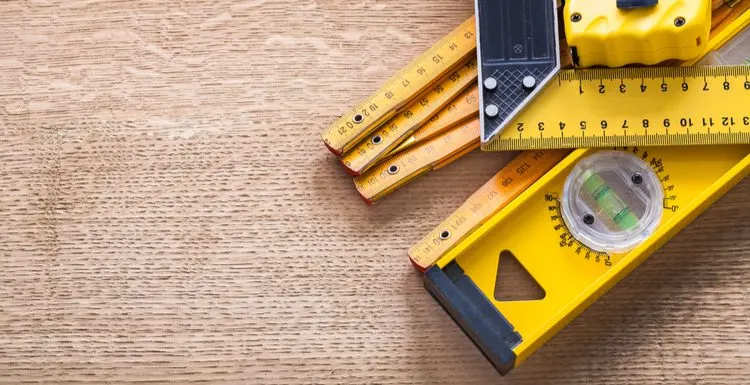When you’re ready to work on a DIY project, you’ll need different types of measuring tools for particular jobs.
We’ll tell you about the most common measuring tools you’ll need and how to use them in this handy guide.
What Are the Different Types of Measuring Tools?
Most of us are familiar with common types of measuring tools like tape measures, rulers, and yardsticks.
However, you might need other tools to complete some projects and ensure accurate measurements.
From the basic tools most people have in a toolbox or junk drawer to more specialty items, it pays to know which tool works best in every situation.
1. Tape Measure
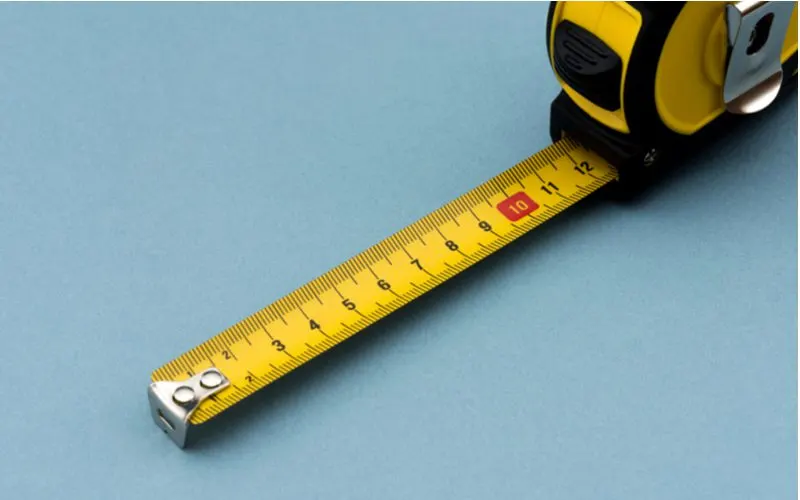
gd_project/Shutterstock
This item is one of the basic types of measuring tools every home should have. Tape measures are valuable tools for measuring the length and space between objects.
These tools consist of a plastic or metal housing that contains a coiled metal strip known as the blade with a hook or tang at the end.
The tang lets you hook the tape to something like the edge of a table or piece of wood, then extend it without the need to hold it in place. The flexible tape lets you measure imperfect spaces that you couldn’t measure with a ruler or yardstick.
Tape measures have a locking button to keep the blade extended and automatically retract when the button is released.
The measurements are in both imperial and metric measurements. Tape measures are one of the types of measuring tools made with construction and builders in mind.
The blade features red squares and black diamonds to help builders measure quickly. The red squares are 16 inches apart, or the amount of space between wall studs. The black diamonds sit 19 3/16 inches apart, which is the space between the centers of each floor joist.
If you don’t trust your measurements with an analog tape measure, choose a digital version that does the measuring for you.
2. Ruler and Yardstick

Alberto Masnovo/Shutterstock
You don’t have to be a woodworker or work construction to appreciate the simplicity of a ruler. These strips of wood, metal, or plastic usually come in lengths of 8 inches, or 20 centimeters, to 1 foot.
Tape measures are simple to use, but the ruler is even easier. Put it against whatever you want to measure, as long as it’s a flat surface, and make your mark. Yardsticks are rulers that measure three feet, or one yard, in length.
3. Square

rawf8/Shutterstock
A square is a type of measuring tool that works best for measuring lumber and creating right angles for things like framing. Despite its name, the tool isn’t square-shaped. Some are triangles. Many squares look like an “L.”
They consist of a short handle and a ruler extending sideways from it at a right angle. The measuring part of the square comes in different lengths.
People refer to squares as carpenter’s squares or builder’s squares because carpenters use them to mark right angles when framing and building things like stairs. They also work well to ensure the straightness of a surface.
A few different types of squares work best for certain types of work.
- A drywall square is longer for better measuring during drywall installation.
- A combination square is a ruler with an interchangeable head. Stonemasons and woodworkers use combination squares to mark angles they need to cut.
- A framing square, also known as a steel square, is the typical “L” shape used to create right angles in carpentry.
- A speed square combines a combination and framing square to create a multipurpose tool.
4. Tailor’s Measuring Tape
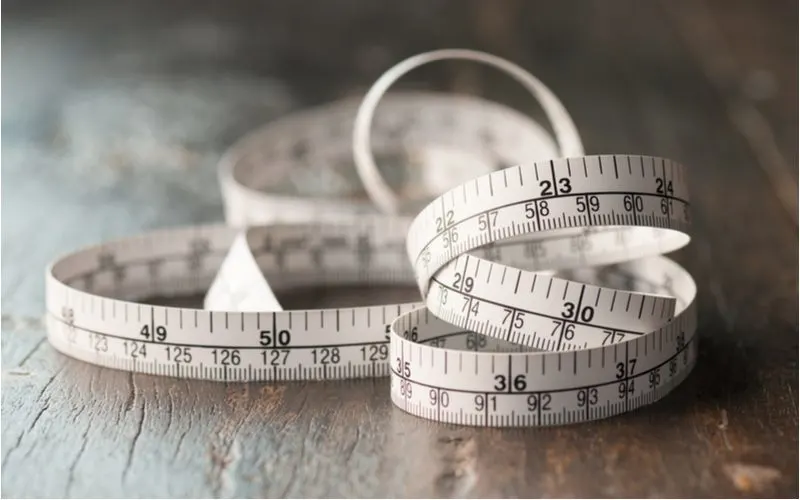
noicherrybeans/Shutterstock
Unlike a rigid ruler or a semi-flexible metal measuring tape, a tailor’s measuring tape wraps around curved and irregular objects to get an accurate measurement. Most of these types of measuring tools are plastic or cloth.
They come in a loose roll or a plastic case that can retract or turn the tape back into the casing.
The most common use for tailor’s tape is to wrap around arms, legs, and other body parts to fit clothing perfectly for tailoring and sewing. However, it’s handy for measuring objects that a ruler or metal blade can’t wrap around.
5. Calipers
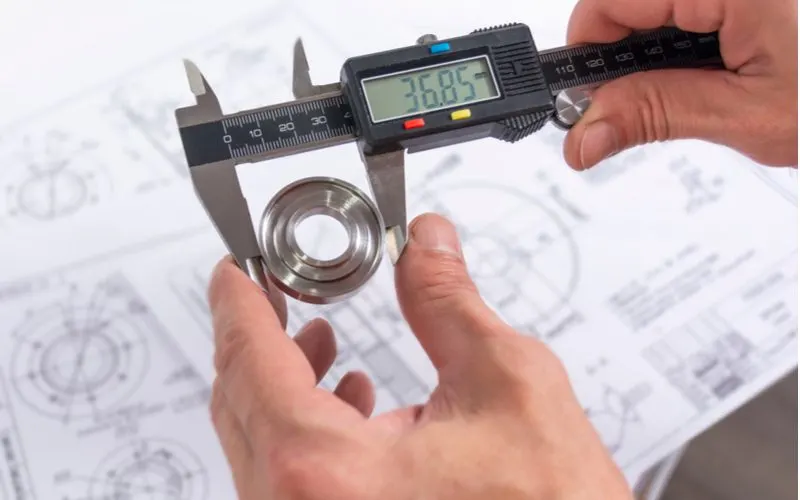
GaViAl/Shutterstock
Calipers are one of the types of measuring tools used to measure the thickness of an object. You put whatever you want to measure between the calipers and close them to determine the width.
People commonly use calipers to measure the thickness of glass or other panels. You can choose between digital or analog calipers.
Some come with a dial, while others have a digital readout or a ruler that gives you the measurement.
You can use spring-joint calipers to measure the thickness of an object or its inside width. These usually require a separate ruler to measure the distance between the caliper legs.
6. Protractor and Compass
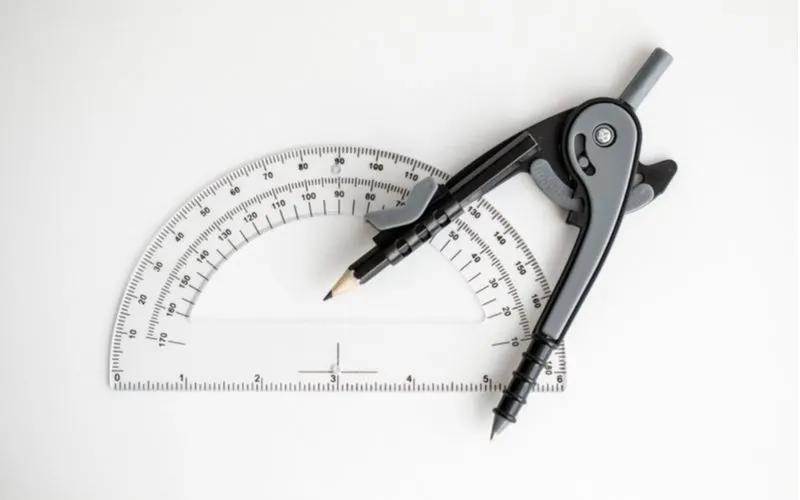
Duntrune Studios/Shutterstock
Many of us used protractors in math class. This tool is usually a metal, wood, or plastic half-circle with a ruler connecting the ends. Protractors let you mark angles and degrees on flat surfaces.
A compass consists of two metal legs joined together to form a “V.” One end is a point, so you can press it against the paper or other surface to keep it in place. The other contains a pencil.
When you set the compass to your angle of choice, you can create a perfect circle by spinning the tool on the point. People who make technical drawings or do much carpentry work use compasses.
7. Angle Finder

Funtay/Shutterstock
The most common type of angle finder consists of two arms connected at one end that are open to any angle you choose. These tools replicate angles and provide their degrees and measurements.
Digital angle finders make determining an angle easier and more accurate. Some models, often called angle locators, feature a clock-like face that measures angles from 0 to 90 degrees.
8. Level
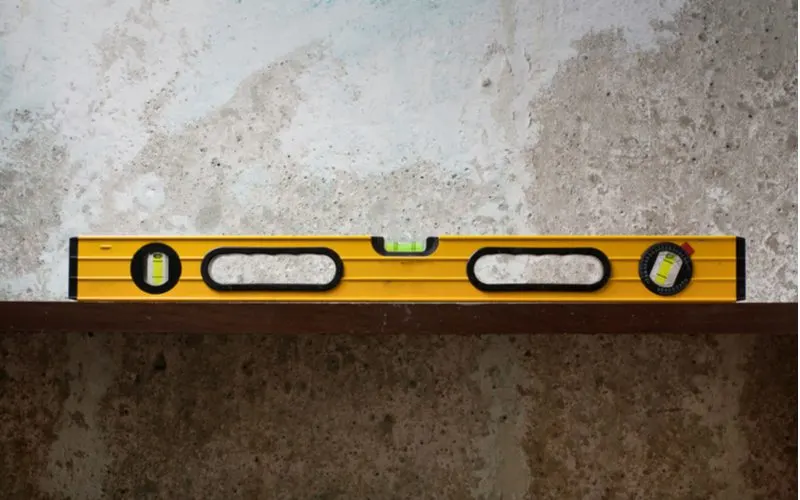
Galyna Motizova/Shutterstock
Levels, also known as bubble levels, are one of the types of measuring tools you may not need to measure length but whether or not something is level.
By placing the level against a flat surface, you can determine if it’s perfectly horizontal or vertical. A bubble is suspended in the liquid inside the level between hash marks to help you ensure there’s not an incline.
You can use levels to make sure items won’t roll off a shelf. Woodworkers and carpenters use them to ensure they properly install walls, floors, and framing.
9. Laser Level
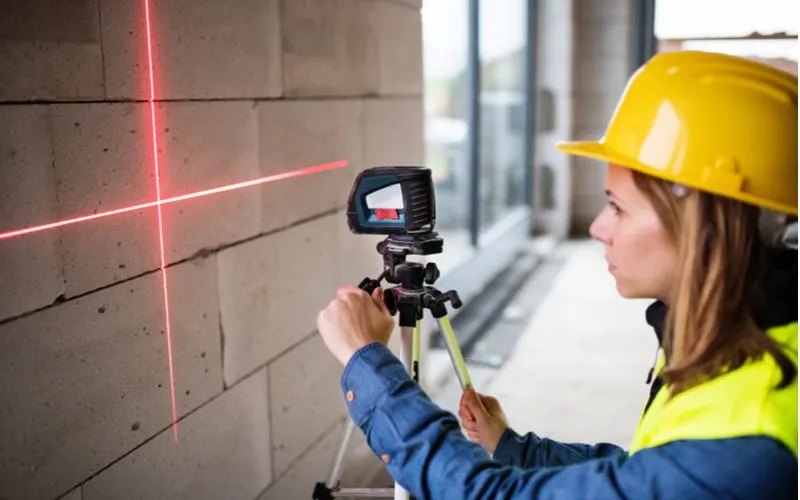
Halfpoint/Shutterstock
A laser level creates a thin beam of light that can provide a perfectly horizontal line. Lining up hanging photographs on a long wall, for instance, can be difficult with a long ruler or yardstick that might not be long enough.
A laser beam shines the light across the length of your surface to provide a perfectly level line every time.
10. Micrometer
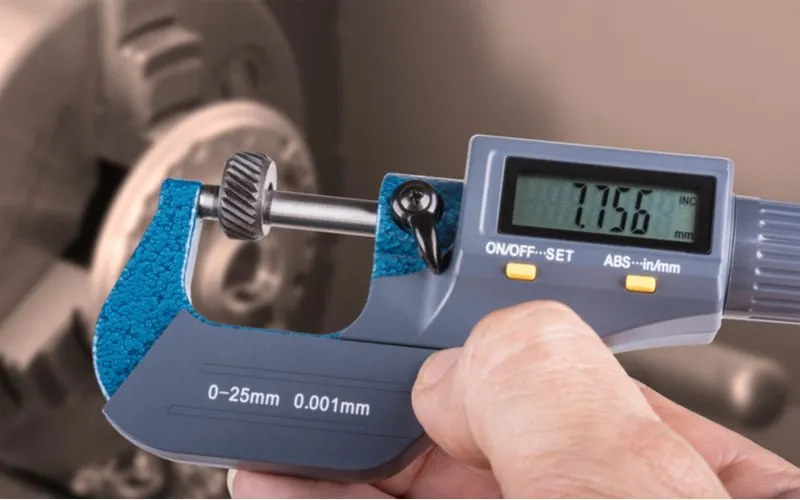
KPixMining/Shutterstock
Like a caliper, a micrometer measures the width of an object. Micrometers look like clamps because whatever you’re measuring goes between the two ends, known as the spindle and the anvil.
You move the spindle until the object is pressed between them, as you’d do with a vice. Most home DIYers won’t need a tool this accurate for measuring. Mechanical engineers use micrometers often, as do other professions that require precision.
Things to Consider
Now that you are familiar with the most common types of measuring tools, here are a few general tips to consider when choosing the ones you’ll need.
- If you need a specialty tool for one-time use, you might be able to rent the tool from a local hardware store.
- Unless you’re doing work that requires specialty tools, you can probably get by with a ruler, tape measure, level, and square for most home projects.
- If you start woodworking or carpentry, you’ll probably want to add a miter box and an angle finder to your arsenal.
- Measure twice but cut once applies to all types of measuring tools, whether they’re digital and sophisticated or analog devices.
Frequently Asked Questions
We hope this FAQ about different types of measuring tools answers your questions.
What is the most common measuring tool?
Schoolchildren and tradespeople alike use rulers regularly. Small ones fit easily in a drawer, making them handy to have in the house.
What’s the most common construction measuring tool?
The tape measure is the most common tool used in building construction.
What are the most accurate types of measuring tools?
The most accurate tools are the ones used for things like engineering because accuracy is so important. Calipers, micrometers, and laser measuring tools fall into this category.
Are digital types of measurement tools more accurate than analog tools?
Yes, digital measuring tools offer more accuracy than manual tools because they eliminate user error and inaccurate readings.
The Most Common Types of Measuring Tools Might Be Enough
For most home projects and DIYs, the types of measuring tools you need come down to the basics, like a tape measure and a ruler. More complicated construction projects like stairs or framing need a builder’s square and a level.
Most specialty types of measuring tools have one use, so you can save money by sticking with the tried-and-true basics like tape measures and the patience to get an accurate measurement.

